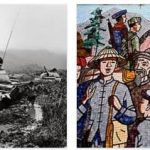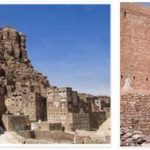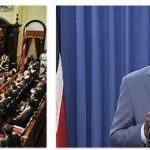The first residents
The island of Hispaniola, on which the Dominican Republic is located, was settled for the first time by Saladoids from South America. Around the year 650 a second wave of immigrants came to the island with the Taino from the Arawak people. The Taino divided the island into five chiefdoms. Each was ruled by a chief. The Taino fought against the island Caribs, which had taken other islands and displaced the Taino who lived there. That didn’t work on Hispaniola.
Hispaniola becomes a stepping stone
Christopher Columbus came to Hispaniola on his first trip to America in 1492. He built a small fort out of the rubble of his ship Santa Maria and named it La Navidad. So this fort became the first Spanish colony in America. On his return a year later, however, Columbus found the fort destroyed by the Taino. He led a campaign against the Indians and had many sent to Europe as slaves. Further settlements emerged, initially La Isabela, later also Santo Domingo among others. Today it is the capital of the Dominican Republic and also gave the island, and later its east, its name. Hispaniola became a springboard for Spanish colonization.
Further Spanish colonization
Christopher Columbus became viceroy, that is, deputy of the king, the new colony, and he appointed his brother Bartolomeo governor. But there were disputes between Bartolomeo and the settlers, which Columbus could not end. The Spanish royal family finally deposed Columbus. The new viceroy Francisco de Bobadilla had the brothers brought back to Spain in chains. Columbus was pardoned, but not reinstated in his office.
In the first few years after the Spanish conquest, many Indians died of diseases. They had no defenses against smallpox or measles. Many more died when they were enslaved and had to toil on the new plantations under unworthy conditions. Meanwhile, the gold mines also provided the Europeans with rich booty.
In 1517 sugar cane was brought to Hispaniola from the Canary Islands. More plantations were created and sugar cane became the basis for economic prosperity. Because many Taino had died, Caribs were brought from the Bahamas, but these too died of epidemics. Now people began to bring slaves from Africa. They soon made up the majority of the residents.
The surviving Indians planned a rebellion against the conquerors from 1519. Several rebellions were unsuccessful. Only the rebellion led by Chief Enriquillo achieved a peace treaty and that his people received an area in which they could live unslaved. Nevertheless, they died out in the 19th century at the latest. However, their genetic makeup can still be proven in part of today’s population.
French rule in the west
In the 17th century, French pirates settled on the northwest coast of Hispaniola and asked France for assistance. Louis XIV sent a governor in 1661 and four years later founded a French colony in the west of the island. It was destroyed by the Spaniards, but quickly re-established. In 1697 Spain finally recognized French rule over the west. In 1804, Haiti declared itself independent from France after victorious battles.
Santo Domingo in the east
According to travelationary.com, the east of the island was now called Santo Domingo. In 1821 Santo Domingo also wanted to become independent, but now came under the rule of Haiti. It was not until 1844 that the country managed to become independent. The country became the Dominican Republic. In 1861 the country voluntarily returned under Spanish rule for two years to resist attempts to be reconquered by Haiti. It finally became independent in 1865.
Dictatorships, chaos and American occupation
Unstable years followed. The dictator Ulises Heureaux seized power in 1882 and ruled until he was assassinated in 1899. Over the next few years, governments changed rapidly, and the country had high debts. In 1905 and 1907 the USA invaded and took control of the country financially. From 1916 to 1924 the country was occupied by the USA.
In 1930, after a few democratic years, there was a military coup under General Rafael Trujillo. He ruled the country until he was assassinated in 1961. Political opponents were brutally persecuted and murdered, and all democratic rules were suspended. Elections were held in 1963, but another military coup and civil war ensued. The USA invaded again in 1965, and withdrew again in 1966.
The way into the 21st century
Several presidents took turns as presidents in the following years. Joaquín Balaguer and Leonel Fernández were both in office twice. In 2012 Danilo Medina Sánchez won the elections. In 2016 he was re-elected.








